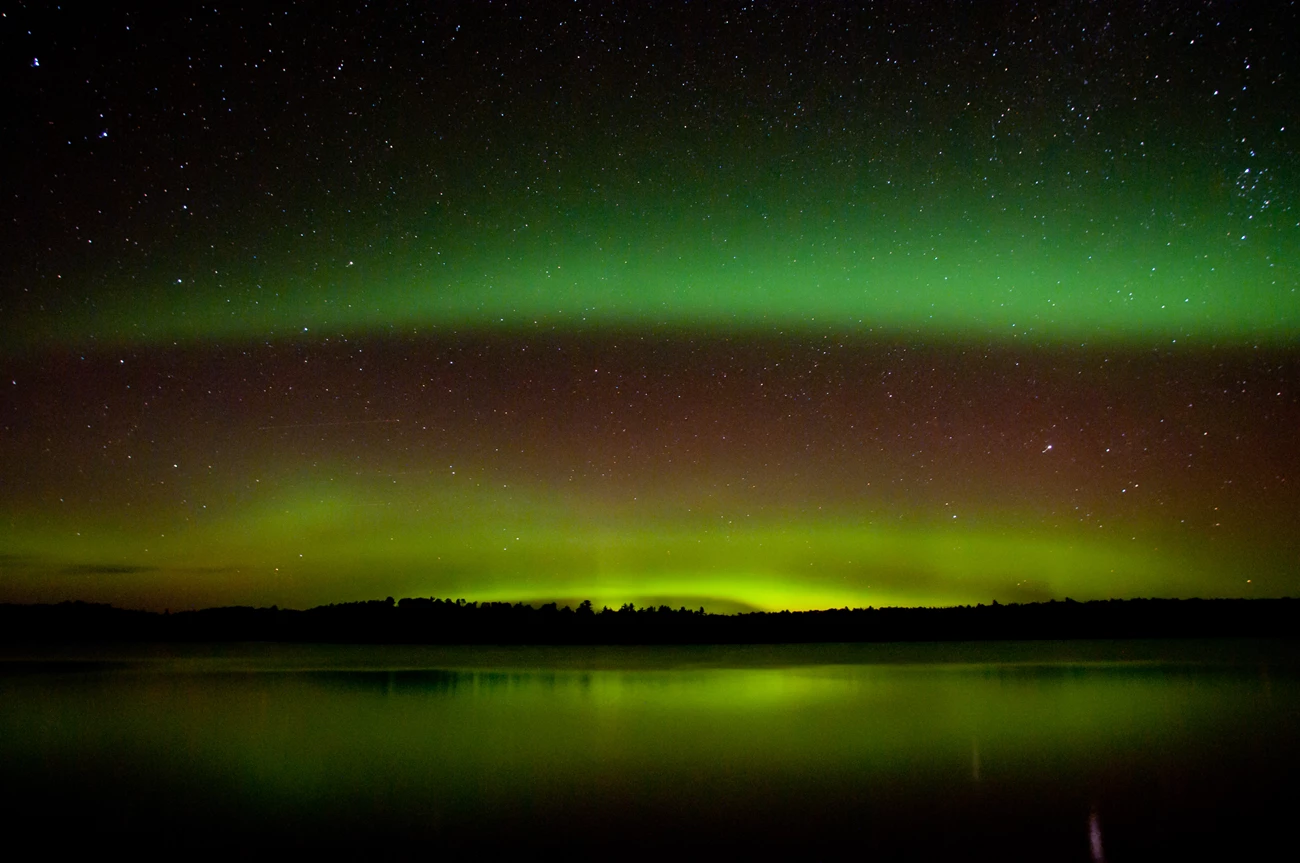
R. Lavoie / NPS The Aurora BorealisThe Aurora Borealis—more commonly known as the northern lights—are radiant shimmering colors that sporadically light up the night sky, and they have fascinated mankind for ages. The word "aurora" comes from the Latin word for "sunrise," and "borealis" means "to the north." Check out our night sky photo gallery to see more Aurora Borealis photos. 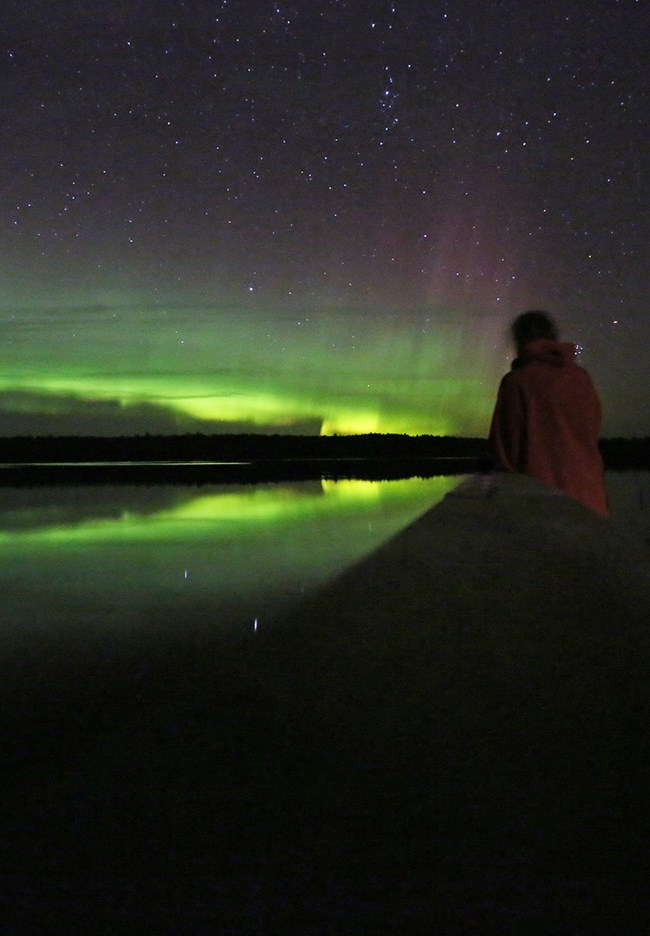
NPS / Dimse Will You See the Northern Lights in Voyageurs?You sure might! Several things must happen to produce the northern lights.
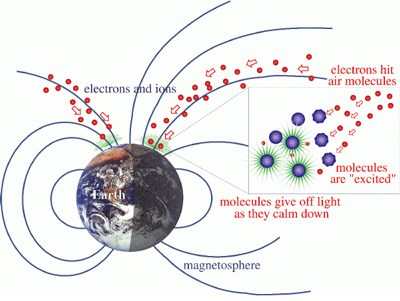
NASA What Causes the Northern Lights?The Earth is constantly being bombarded with debris, radiation, and other magnetic waves from space. Most of the time, the Earth's own magnetic field does an excellent job of deflecting these potentially harmful rays and particles. When charged particles from the Sun encounter the Earth's magnetosphere, the particles are deflected by magnetosphere's spiraling motion around the field lines. This deflection slows the particles streaming from the Sun, causing them to flow around the Earth like water in a stream being diverted by a rock. Sometimes the particles penetrate the Earth's magnetosphere and collide with nitrogen and oxygen atoms in our atmosphere. This releases photon energy in the nitrogen and oxygen atoms, producing amazing aurora lights. The color of the aurora depends on which atom is struck, and the altitude of the collision.
When these constantly-shifting magnetic and electrical forces react with one another, the aurora appears to dance in the night sky. 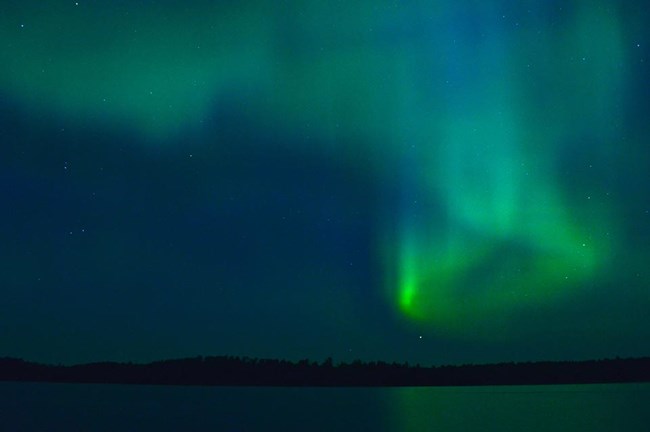
NPS / Johnson-Bice What You Might SeeThe northern lights will appear as streaks or cloud-like patches of light. Depending on their intensity, the lights might be just a patch of band on the northern horizon; at higher intensities the northern lights can fill the entire sky. The lights will usually be white or a pale green, but will sometimes appear in colors such as yellow, red, blue, or even purple. If you're uncertain if that patch of light is indeed the northern lights, watch and be patient; the northern lights can disappear completely, only to regain their brightness minutes later. If the patch grows brighter, fades, then reappears, it is most likely the northern lights. When the conditions are right, the northern lights offer an entrancing, almost magical display that fascinates all who see it—a true North Woods experience. 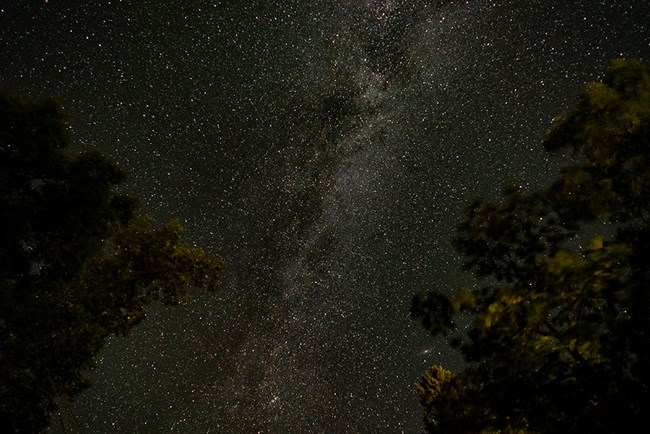
NPS What to Do if You Can't See The AuroraEven though the Northern Lights are only seen intermittently in Voyageurs National Park, don't despair if—despite your best planning—you do not get to view them. They may be more active the following night, or during future trips. And while watching for the aurora, you can also see the Milky Way, satellites, shooting stars, and more as you view the dark skies of Voyageurs. |
Last updated: May 13, 2025
